David Salle’s Latin Rhythms (2018) is one of 11 large-scale canvases currently at London’s Skarstedt gallery. A pair of pinafore-wearing housewives sashay from left to right while three buffed-up brogues point in different directions, perhaps doing the twist. Airborne bowls act as spotlights, directing our attention towards a doe-eyed donkey with skew-whiff ears: one pricks towards the animal’s passenger (a grinning Mexican in a sombrero); the other flits towards a silver cone bra that resembles speakers – and nods to Madonna, queen of pop, circa 1990.
Salle is both composer and conductor here, creating a sequence of forms that chime, clang and clash. The Brooklyn-based artist and critic, born in 1952 in Oklahoma, was taught at the California Institute of the Arts by the conceptual artist John Baldessari. In the 1970s, he emerged as part of the Pictures Generation – a group of American artists who challenged ideas of authenticity and appropriation. As well as observing the world around them, they borrowed and thieved from high and low art – Old Masters, photographs, adverts, comics. As Janet Malcolm wrote in a profile of Salle in the New Yorker in 2014, the artists ‘made a kind of mockery of art history, treating the canon of world art as if it were a gigantic, dog-eared catalogue crammed with tempting buys’.
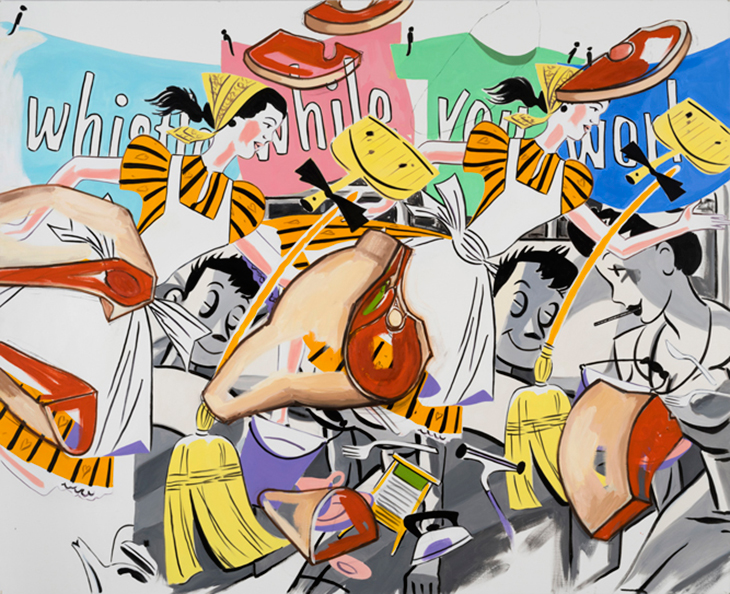
Autumn Rhythm (2018), David Salle. Courtesy the artist and Skarstedt, New York; © David Salle/VAGA at ARS, NY and DACS, London 2019
Salle is concerned with composition above subject matter. He’s less interested in the baby-blue box of Kleenex in Leader of Seals (2018–19) than how it relates to both the bare-chested man with the whiskery moustache and the torso-less lady in the butter-yellow skirt teetering on the edge of the canvas. He establishes relationships between elements that don’t belong together. In Autumn Rhythm (2018), smiling dustpans in black bowties intersect with lilac handbags and rosy hunks of raw meat. If the effect were more dreamlike, and less dense, it could be described as Surrealist.
The layers of overlapping imagery vie for attention and refuse to submit to any straightforward reading. Yet throughout the series, like familiar chords of a melody, are recurrent themes. Each has a black-and-white line drawing as its backdrop – an enlarged reproduction of a New Yorker-style cartoon from the 1940s or ’50s showing salarymen in suits and, we might assume, their wives in pearls. For Salle, ‘to repaint them is to make a kind of history painting’. As with Pop art, brightly coloured commercial imagery crops up on almost every canvas, from high-heeled shoes to household appliances. Comedy is also a constant: that nurse may be sucking on a thermometer but it certainly looks like a cigarette; step closer to Leader of Seals and you might just glimpse some cleavage between an arm and a leg.
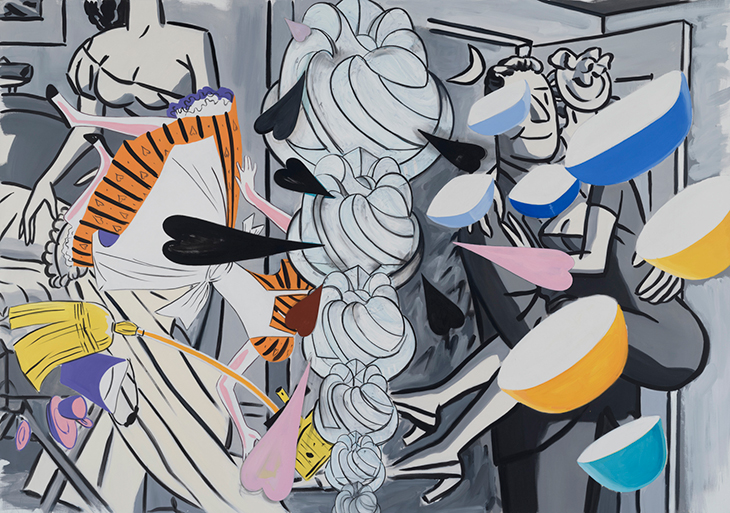
Grey Honeymoon (2018–19), David Salle. Courtesy the artist and Skarstedt, New York; © David Salle/VAGA at ARS, NY and DACS, London 2019
Just as Salle forges relationships, he also creates rifts. Grey Honeymoon (2018–19) is split down the middle with a shaft of meringues, transforming a single canvas into a diptych. Black hearts may swarm across the divide like swallows, but an upended housewife hurtling towards it appears to have lost her head to the sugary peaks. At times, Salle inserts multiple framing devices within one work: the left-hand side of Equivalence (2018) features three insets of a nurse tending to an invalid. The result is that of a ricochet, an ongoing beat.
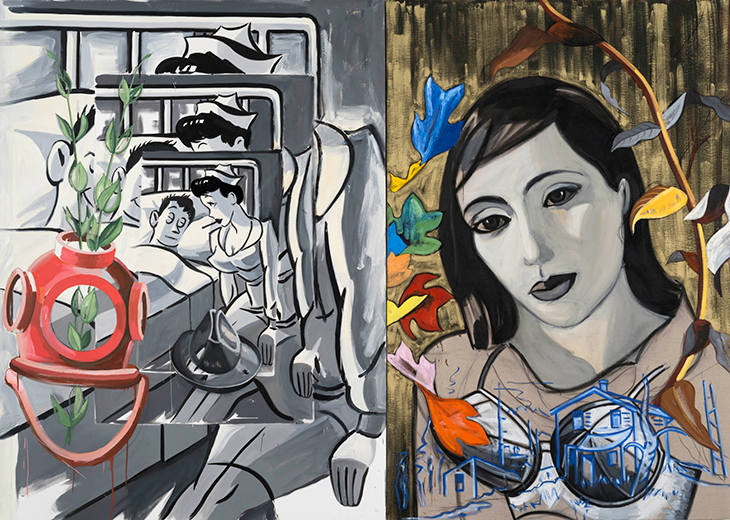
Equivalence (2018), David Salle. Courtesy the artist and Skarstedt, New York; © David Salle/VAGA at ARS, NY and DACS, London 2019
Every element of Salle’s paintings contributes to the general rhythm, whether it’s a glockenspiel-like row of logs or a swirl of autumn leaves. The woman in an off-the-shoulder dress in Inverted Heart (2019) has piano-player fingers, while a skater or acrobat skips across the foreground of Foreign Postmark (2018). To me, it’s hard to look at the cups, saucers, teapots and cutlery that soar across many of the canvases and not picture the twirling tableware serenading Belle in Beauty and the Beast.
It would be easy to assume, from the occasional thinning brushstroke and drip of paint, that Salle painted these frenetic pieces with the same high-energy they exhibit. But each canvas evolved intuitively over time, one element leading to the next, free from revisions. The result is a series of enjoyably off-kilter works that flicker between high art and low, fast tempo and slow, all the while insisting that we are living in a material world.
‘David Salle: Musicality and Humour’ is at Skarstedt Gallery, London until 11 May 2019.
Unlimited access from just $16 every 3 months
Subscribe to get unlimited and exclusive access to the top art stories, interviews and exhibition reviews.

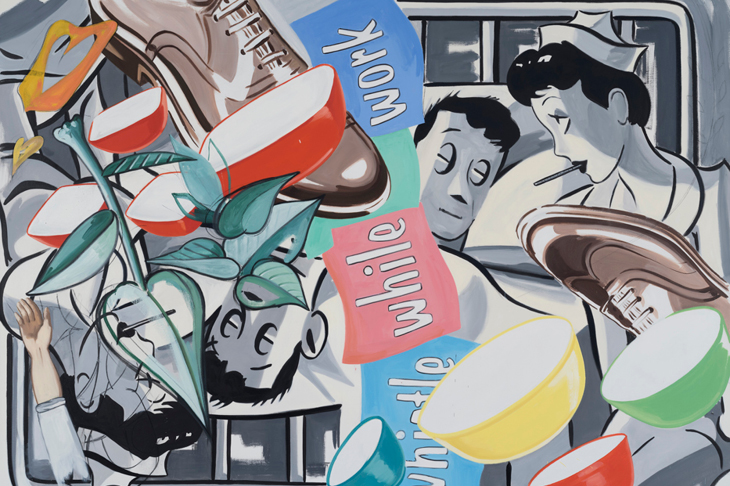
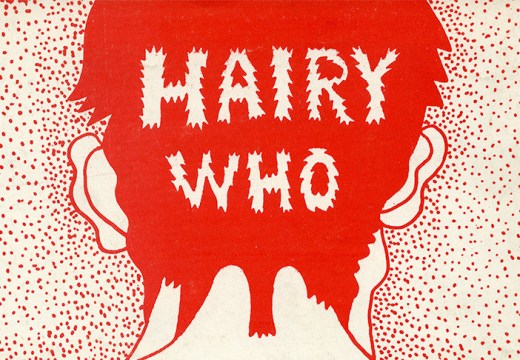
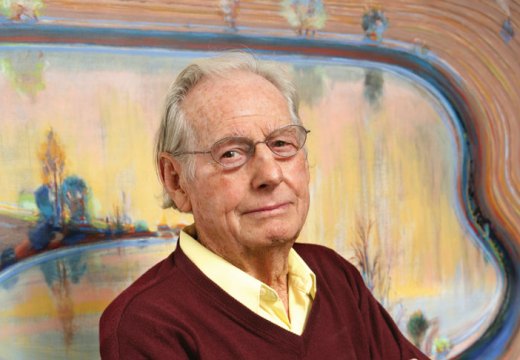
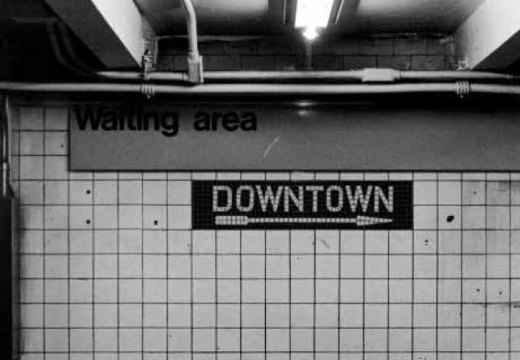









![Masterpiece [Re]discovery 2022. Photo: Ben Fisher Photography, courtesy of Masterpiece London](http://www.apollo-magazine.com/wp-content/uploads/2022/07/MPL2022_4263.jpg)
Why are fathers so absent from art history?